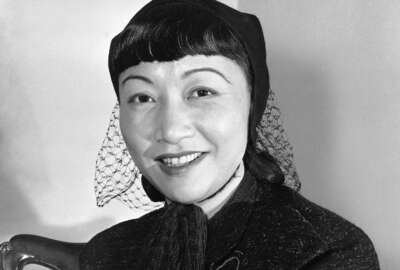Auction of Soviet art triggers probe; art market on guard
The sale of Soviet masterpieces that fetched $3 million at a London auction is causing uproar in Moscow's art community, where it was largely perceived as a theft...
MOSCOW (AP) — The sale of nine Soviet-era masterpieces that fetched $3 million at a London auction in 2014 is causing uproar in Moscow’s art community, where it was largely perceived as a theft of the family jewels.
The sale of the paintings, one of which now has a place of pride in a Moscow oligarch’s private museum, has triggered a criminal investigation.
There also has been a push to re-nationalize the collection that once belonged to a Soviet artists’ trade union. The dispute has also made it much more difficult to move Russian art across the border for sales or exhibitions.
In recent months, several Ministry of Culture officials were fired, rules were tightened on the sale of Russian art abroad, and the Russian man who sold the artworks in London is under pressure to return a huge Soviet-era art collection to the government.
The Soviet Union had no private property, with everything from factories and mansions to bakeries and schools owned by the state. After the regime collapsed in 1991, most of the property ended up in private hands in the chaotic and often crime-ridden privatization drive.
Art was no exception.
“For decades, Soviet art was worth nothing,” says Milena Orlova, editor-in-chief of The Art Newspaper Russia, explaining that works by top Soviet artists like Alexander Deineka and Georgy Nissky could be bought for close to nothing in the 1990s. “Collections were sold off for a dime. They were sold off like junk.”
While bigger Russian institutions such as the Hermitage in St. Petersburg and major museums retained their state ownership, smaller collections ended up with obscure private organizations.
Twenty-five years later, the government seems to be using the 2014 auction as a pretext to demand the return of some of what it considers to be the family jewels.
The Soviet Artists’ Union was a powerful lobbying group that owned a rich collection donated by member artists. But as the Soviet Union broke apart, the collection of more than 46,000 items was transferred to a nonprofit group of artists, the International Confederation of Artists’ Unions, or ICAU.
The Art Newspaper Russia, the country’s top art publication, has written about the government’s impending plans to reclaim the ownership of the ICAU’s massive collection. The Culture Ministry wouldn’t comment on these reports, but told The Associated Press — in an about-face from an earlier stance — that it now had “reasonable doubts” that the artists’ group ever had the legal right to sell the masterpieces at Sotheby’s.
Yet a pre-auction exhibition of the ICAU’s works in London was held with the Culture Ministry’s support and the ministry a year later sponsored an exhibit of some of these works in Italy.
Alexei Ananyev, a Russian billionaire who bought Georgy Nissky’s “Under the Snowy Fields” for 1.8 million pounds ($2.2 million), the most expensive item of the ICAU’s collection, is baffled why anyone would question the legality of the sale.
“We think we bought it legally,” he told the AP. “This painting has an immaculate provenance. It was acquired in 1964 and has since been the property of the Confederation, which is an NGO (nongovernmental organization) and can dispose of it as it sees fit.”
Ananyev is proud of his purchase and feels it’s “part of the mission” of the Institute of Russian Realist Art, a private Moscow museum he opened in 2011, “to buy top works and bring them back to Russia.”
The auction, which was widely covered in the media, attracted the ire of many in the Russian art community who thought selling these masterpieces abroad was akin to disposing of family heirlooms.
“The art community took it very painfully when those works were taken out of the country and put up for sale, because it was like someone took it from the Tretyakov Gallery and sold it,” says Alexander Popov, director of a top Moscow art valuation firm, referring to one Russia’s top state-owned galleries.
Sotheby’s told the AP in emailed comments that it is “cooperating fully” with Russian authorities “investigating some aspects of the activities of the ICAU.” The auction house said that its Russia sales don’t appear to have been affected by the scandal, pointing to a 50-percent increase in Russian art sales in November 2016 compared with a year earlier.
The investigation launched last year discovered that “Under the Snowy Fields,” one of the two Nissky works that Ananyev bought at that auction, was valued at just 800,000 rubles (under $14,000) by a ministry of culture expert, which was necessary for clearing customs. That means the government was paid a measly export duty on it. On top of that, the ICAU’s head was granted a permit in his name to take the paintings out of the country as if he personally owned the collection.
Five ministry officials who handled the documents for the ICAU’s works have been fired and another reprimanded, the culture ministry told the AP. The scandal also triggered a purge of art valuers who hold state licenses to issue travel permits, with 125 names stricken off the nationwide list.
ICAU chief Masut Fatkulin didn’t respond to numerous calls seeking comment on the topic, although the ICAU in a statement to the AP confirmed reports of a police raid of their offices in January.
In an interview with the Novaya Gazeta newspaper last year, Fatkulin defended the sale but admitted the group did not have a full inventory of the works they inherited from the Soviet Artists’ Union. He vowed to make a proper inventory in the future.
On the ground, the Russian investigation has made it difficult for art collectors and galleries to move art across the Russian border.
“(After) that story with Nissky happened, several people got detained with undervalued declarations,” says Popov. “Now everyone is afraid of taking responsibility for an export.”
Russian officials’ attitudes seem to have shifted from turning a blind eye to shady art deals that dodge taxes to scrutinizing every shipment. People in the art community recall a flurry of recent examples of clients facing hurdles at the border or exhibitions of Russian art abroad derailed because of troubles with the authorities.
“Oligarchs are leaving this market,” says Popov. “They realize that if they buy a thing here, it practically becomes real estate. You can’t move it out.”
A well-connected member of the art community told the AP the scandal around the Sotheby’s sale is part of a long-standing dispute between the ICAU and the Tretyakov Gallery, which share a mammoth gallery on the Moscow River. The person, who asked to speak anonymously because of the sensitivity of the issue, said investigators turned their spotlight on Fatkulin because the Tretyakov started talking to officials about wanting to expand their space.
The Tretyakov Gallery declined to comment on these reports.
In January, the Art Newspaper reported the Russian government was drafting plans to reclaim the ICAU’s Soviet art collection. The Culture Ministry, however, told the AP it was not aware of such plans.
Ananyev, the art collector, fears efforts to renationalize the ICAU’s collection means “these works could end up locked in museum depositories for years and will not be available for the general public.”
He said experts should seek a wider solution.
“Maybe it would make sense to think about replenishing the collections” of private museums that have the resources and expertise to preserve art treasures, Ananyev suggested.
___
Kate de Pury contributed to this report.
Copyright © 2025 Federal News Network. All rights reserved. This website is not intended for users located within the European Economic Area.





